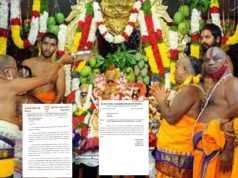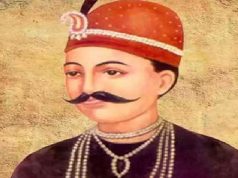
Society in the lands we know in modern times as India once was a society firmly placed on the twin-pillars of self-governance and voluntaryism. Voluntaryism is a philosophy that posits that all forms of human association should be voluntary. A voluntaryst society is one where people live, socialise, transact and trade without any structures of power and hierarchy, without any coercion or regressive power dynamics. The decentralisation of power, which ends with a community or family in modern times, ended only with the individual, politically, socially and spiritually, in ancient India. Spontaneous order in political and economic realms were respected and harmonized. While in the past I have written on Dharmocracy – comprehensive (political, economic and spiritual) democracy, in this piece, I go one step further in decentralisation and renegotiation of the normative to the individual. In ancient India, atleast in spirit, it was Swarajya (self-rule of people within picayune kingdoms/republics – so much so, that even in 1947, India had 565 princely states) not Samrajya (imperial rule), catallaxy (a synchronisation of individual economics and interests) not a modern economy (transactions with assumed common goals and interest). This was the perspective that prevailed, and in such a liberal society, people lived with responsibility, peace and rationality, in what was a rarely found open, free and transparent society.
The Veda are the fountainhead, the spring of profound and beautiful philosophical, soteriological and spiritual principles and ideas

Vivaha Sukta, Rigveda Mandala 10 Hymn 85 Verses 16-22
Composed in Vedic Sanskrit, the Veda constitute the oldest layer of scriptural literature within Santana Dharma, with Hindus considering the Vedas to be apauruṣeya, – not authored by man. While monarchies prevailed in Vedic society, not only was there a movement away from preeminence given to political power towards a more spiritual one but also the existence of ancient Indian republics – Ganatantra, which contributed towards decentralisation of power. Whether this directly took the form of anarchism is debatable, but there was a move towards reducing the importance of the construct of a primary, overarching state and constructs of powers. The Dharmic path has always been about a fearless trek into the unknown, about seeking the truth of reality. It throws out any and every imposed normative ideal of political philosophies, and in doing so, calls for the sacrifice of attachment of the human mind with dogma and rigid political alignments. While this perspective highlights society’s ills and even prescribes possible solutions, it lays a greater emphasis on mutual respect, cooperation and harmony in society rather than rigid loyalties to political constructs of the state or ideologies. This is part of the greater Dharmic realisation of the futility and fleeting nature of all constructs, be it political, social or economic, in the pursuit of the Absolute Truth:
Satya, the Absolute Truth, is beyond constructs of politics and society, particularly those of state and (political) ideologies
And in doing so, it had anarchist undertones, when one considers politics: it highlighted the fallibility of human power and reasoning that can be applicable to one and all, the importance of spontaneous self-organisation and unconscious design in political entities, significance of innovation and influence of factors and forces beyond the control of a central authority.
Satyaniti, this Dharmic anarchism, is the result of the Indic civilisation embracing the dynamism of life, and the spontaneity and capacity to self-organize of human beings.
The principle of self-governance naturally arises from this realisation. Instead of imposed structures, emphasis is on peaceful emergent orders without any rigid conservatism regarding hierarchy, power dynamics and coercion. A truly Dharmic society has at its foundations a preeminent place for honest introspection, self-improvement and evolution of thought and individuality thereby. This is a dynamic way of determining one’s purpose of life, of one’s role within society and the key to one’s happiness.
There is a distinct difference between western anarchism and Dharmic anarchism. While western anarchism is about negation and oft-violent insurrection against political structures, the Dharmic version preoccupies itself with the realisation of why obsession with these political elements is naturally at odds with one’s existence and well-being. The Rishis (seers) since times immemorial led by example, in highlighting how self-governance and self-rule is significant, coupled with anarchist tendencies of not placing much importance with control of the state. They dwelled in forests outside the control of any government, be it of a monarchy or republic of ancient India. They brought forth a spiritual mooring for education and existence, a values-based living and a realisation of Rta (cosmic order) and Dharma (the path that facilitates this order, the universal cosmic principle as well equilibriation in nature).
While western anarchism emphasised anti-state policies, Dharmic anarchism emphasised self-consciousness. While western anarchism went against specific rulers, Dharmic anarchism went for decentralised and non-hierarchical polities. The latter prioritises community living, sensitivity to holistic living and ecologically sustainable lifestyles. This was done with a combination of grassroot democracy (that was centralised around the unit of the Gram – village), Dharma, Varnasrama (not Jaativad) and socio-spiritual realisation of Satya – Truth.

Gram Panchayat. Courtesy: Shagil Kannur
The grassroot democracy can be seen even today with the Panchayati model. Over millenia, this turned India into not only a village-based society but also a strongly community-based and resilient society. The movement towards making these fundamental units of politics and society self-governing and self-sufficient has been seen over the ages. This was in a cooperative model, which was sustainable and nature-bound, and most importantly, independent from the state and its associated politics. Orientalists such as Metcalfe, Munroe and Wilks have described the importance of these communities in India. Kings came and went, dynasties came and went, power exchanged powers, wars took place. What never changed beyond a point was the underlying social fabric of India, based on the village- and community-based model. C. F. W. Hegel highlighted how this system made India impervious to the vagaries of despotism and subjugation by rulers and invaders, even during the colonial era. The achievement of this high level of decentralisation was that there never was a political monolith that a coloniser or invader could demolish for the Indians to fall as a people. It is this rich political heritage that naturally translates to the principle of self-governance, self-rule and Swaraj, and it is this rich political heritage that I would like to stand by.
Satyaniti and Swaraj constitute the historical backbone of the socio-political order of India, through the ages.
Source: OpIndia
మరిన్ని వార్తలు, విశేషాల కోసం Samachara Bharati యాప్ ను క్లిక్ చెయ్యండి.












